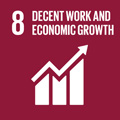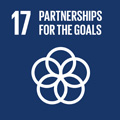- Docente: Sara Fiorentino
- Credits: 6
- SSD: FIS/07
- Language: Italian
- Teaching Mode: In-person learning (entirely or partially)
- Campus: Ravenna
- Corso: First cycle degree programme (L) in Mediterranean History, Societies and Cultures (cod. 5974)
-
from Mar 23, 2026 to Apr 27, 2026
Learning outcomes
The course aims to provide fundamental knowledge regarding the science and technology of archaeological materials through the application of scientific methodologies with the goal of technological characterization of artifacts (analysis of constituent materials, manufacturing techniques, provenance studies, authenticity, and dating).
By the end of the course, students will be able to examine materials, perform a classification based on preliminary laboratory observations, evaluate the applicability of more complex scientific methodologies for material analysis, and present relevant questions appropriately in discussions with experts. They will also know how to select materials for sampling and will be capable of carrying out the sampling process and determining the types of analysis to be performed.
Course contents
The course aims to provide a foundational framework on the contributions of scientific disciplines (with specific reference to archaeometry) to the study of material productions, particularly focusing on their history and dynamics.
Specifically, it will illustrate and discuss how a correct contextualization of the data obtained from diagnostic investigations, aimed at characterizing materials, can support a deeper understanding of the socio-cultural, commercial, and ethnological dynamics underlying the production and circulation of material culture.
Part 1 | Material Culture as an Archive of KnowledgeThe first part of the course will focus on the concept of material culture, with particular emphasis on rediscovering the intangible values and meanings behind the manufacturing of objects that are expressions and testimonies of our past. Specifically, it will be discussed how objects from our material culture can serve as effective and direct tools for understanding past societies, acting as carriers of knowledge, ideas, and relationships between peoples and cultures. The course will also address the relationship between tangible and intangible cultural heritage, material and immaterial aspects, with reference to conventions and recognitions established by UNESCO.
Part 2 | Understanding ArchaeometryThis part of the course will provide an introduction to the discipline, its objectives, and its evolution over time. The course will discuss how the focus has gradually shifted from the initial data collection aimed at understanding individual objects and/or contexts, to a more interpretative phase, centered on a deeper understanding of the technological history of materials, continuity elements, and transitions that have marked it, as well as the socio-cultural dynamics underlying the manufacturing and circulation of objects. Finally, the concept of "thought-out" diagnostic protocols will be examined, adaptable to material classes and functional to answering specific questions in collaboration with other disciplines (e.g., archaeology, anthropology, history, and technology of production, etc.).
Part 3 | Material Classes and Case StudiesThis part of the course will focus on specific material classes that define material culture. Attention will be given to ceramics, metals, glass, and decorated surfaces in architecture. For each material class, an introductory session will be held, with particular focus on technological aspects, followed by the illustration and discussion of archaeometric approaches used to characterize the raw materials, production and processing technologies, and the state of conservation. Finally, case studies will be presented to provide a deeper understanding of how reasoned discussion and contextualization of archaeometric data can contribute to a more profound comprehension of human technological history, as well as the socio-cultural dynamics underlying the production and commercialization of objects that are part of our material culture.
Readings/Bibliography
The course materials presented and discussed in class will serve as the starting point for preparing the exam and will be made available to students on the following website: https://virtuale.unibo.it
- L. Ciabarri (a cura di), Cultura materiale: oggetti, immaginari, desideri in viaggio tra mondi, Milano, Raffaello Cortina, 2018 [REQUIRED]
- M. Milazzo, N. Ludwig, Misurare l'arte. Analisi scientifiche per lo studio dei beni culturali, Bruno Mondadori, Milano, 2010 [REQUIRED]
- I. Woodward, Understanding Material Culture, New York, SAGE Publications Ltd, 2007 [CONSIGLIATO]
- A. Castellano, M. Martini, E. Sibilia (a cura di), Elementi di archeometria. Metodi fisici per i beni culturali, Milano, Egea, 2002 [RECOMMENDED]
- M.L. Stefano, P. Davis, G. Corsane, Safeguarding Intangible Cultural Heritage, Martlesham, Boydell & Brewer, 2013 https://www.cambridge.org/core/books/safeguarding-intangible-cultural-heritage/AB99885D97C9126C38A61289BC8F4007 [RECOMMENDED]
- G. Artioli, Scientific Methods and Cultural Heritage: an introduction to the application of materials science to archaeometry and conservation science, Oxford, Oxford University Press, 2013 [RECOMMENDED]
- H. Edwards, P. Vandenabeele, Analytical Archaeometry: Selected Topics, London, The Royal Society of Chemistry, 2012 [RECOMMENDED]
- M. Martini, M. Milazzo, M. Piacentini, Physics Methods in Archaeometry, Bologna, Società Italiana di Fisica, 2004 [RECOMMENDED]
Teaching methods
-
Lectures with PowerPoint Presentations: Theoretical lessons supported by presentations to illustrate key concepts and methodologies.
-
Case Study Presentations: Presentation of real-world examples to apply theoretical knowledge to practical scenarios.
-
Small Group Discussions: Discussions aimed at verifying students' understanding of the content and stimulating dialogue and exchange of ideas among peers.
Assessment methods
The exam consists of an oral interview, during which the student will be required to present an archaeometric case study. The student will design and publicly present the case study in the presence of other candidates. Based on the presented case study, the instructor will ask questions related to the topics discussed during the lectures.
It is recommended to structure the presentation as follows:
-
Introduction to the object or context of interest;
-
Objectives and issues;
-
Methodological approach;
-
Interdisciplinary relevance.
The presentation can be supported by PowerPoint or other software and should last between 15 and 20 minutes.
The exam aims to evaluate the achievement of the following learning objectives:-
Ability to design an archaeometric study;
-
Knowledge of the diagnostic and analytical process for major archaeological materials;
-
Familiarity with the main diagnostic and analytical techniques for a specific material class;
-
Ability to assess the applicability of a technique in different contexts, considering both expected benefits and limitations.
The student’s ability to present a comprehensive view of the topics, coupled with critical thinking, mastery of the content, and clear expression, will be rewarded with excellent grades.
Grades between "fair" and "sufficient" will be given for memorized knowledge, unstructured synthesis and analysis, or occasionally inappropriate language. Significant gaps in knowledge, inappropriate language, or lack of orientation in the topics and bibliographic materials provided during the course will result in a barely sufficient grade in case of minimal factual knowledge or a negative grade if there are major deficiencies.
Teaching tools
The lectures will be supported by a PC and a projector for sharing the teaching materials prepared.
Office hours
See the website of Sara Fiorentino
SDGs




This teaching activity contributes to the achievement of the Sustainable Development Goals of the UN 2030 Agenda.
